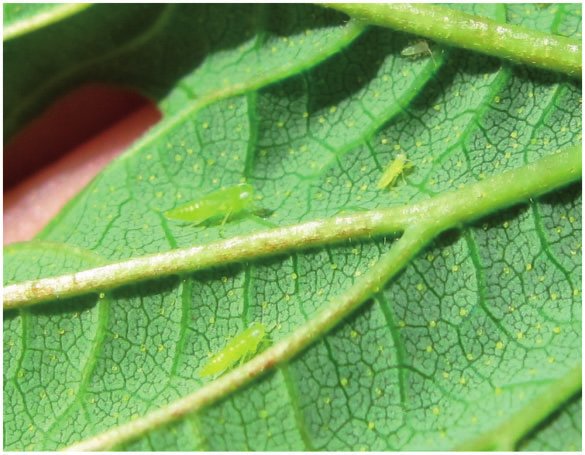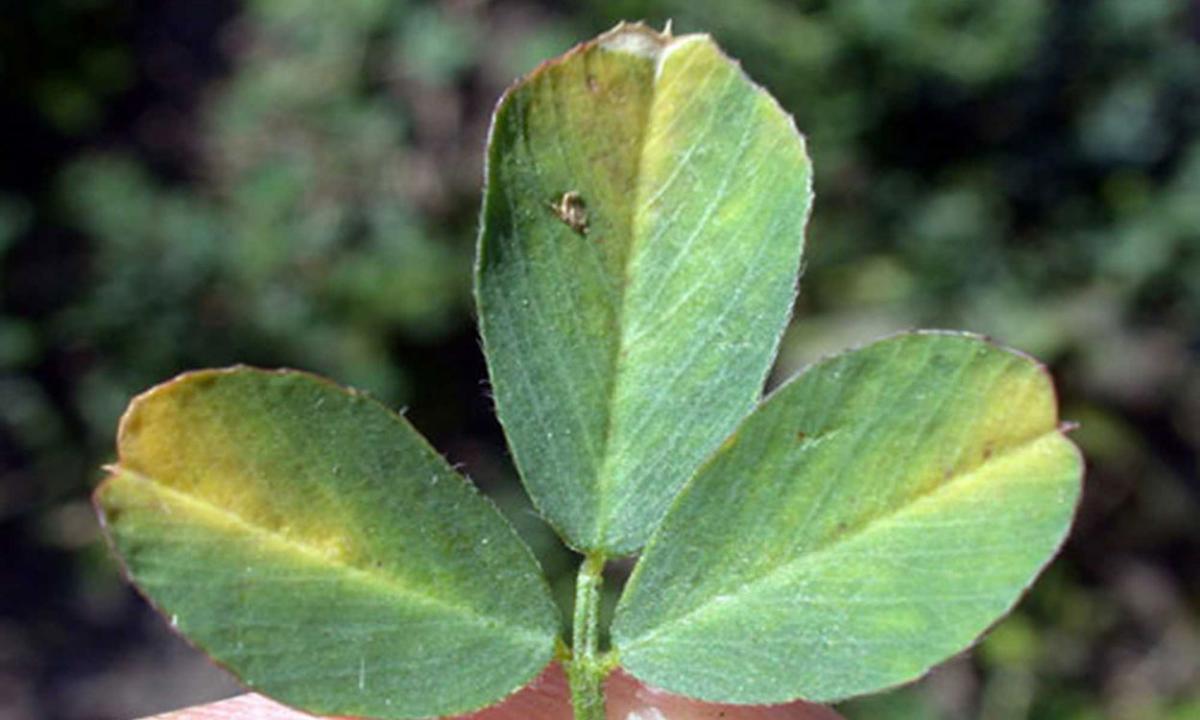Potato Leafhopper
Empoasca fabae
These small (1/8-inch long) migratory insects are yellow-green, wedge-shaped, and will jump or fly when disturbed. Nymphs and adults damage alfalfa during midsummer. Injured plants typically exhibit V-shaped yellowing of the leaf tips, commonly refered to as 'hopper-burn'. Damage to alfalfa can be substantial in some years, and it is worth some effort to scout for and manage this pest. Stunted, yellowed plants have lower quality as livestock feed because of reduced protein levels.
|
Leafhopper nymph (Scott Lewins). |
Potato leafhopper adult. |
|
Damage caused by the potato leahopper. |
Controls should be applied before yellowing begins, and one spray applied to stubble is usually adequate for control. Sample values below represent the average number of leafhoppers per sweep from at least 20 sweeps at a minimum of five locations per field; stem length is the average plant height. If alfalfa becomes yellowed and stunted, it may be helpful to harvest before treatment, as this will serve to remove eggs which are not susceptible to insecticide. The lowest recommended rates of insecticide have often proven effective for potato leafhopper control, and re-infestation seldom occurs.
Resistant Varieties
Kanza and Riley varieties have some resistance to potato leafhoppers and have been recommended for establishing new plantings, but newer varieties with higher levels of resistance are now available. Check with seed suppliers for varieties adapted to Kansas conditions that have potato leafhopper resistance.
Potato Leafhopper Thresholds
| Stem length (inches) | Average no. leafhoppers / sweep |
|
3 or less |
0.2 |
|
6 |
0.5 |
|
8 - 10 |
1.0 |
| 12 - 14 | 2.0 |
Please refer to the most recent Alfalfa Insect Management Guide for specific control alternatives.
Page last updated 4/17/2024 by J.P. Michaud.


